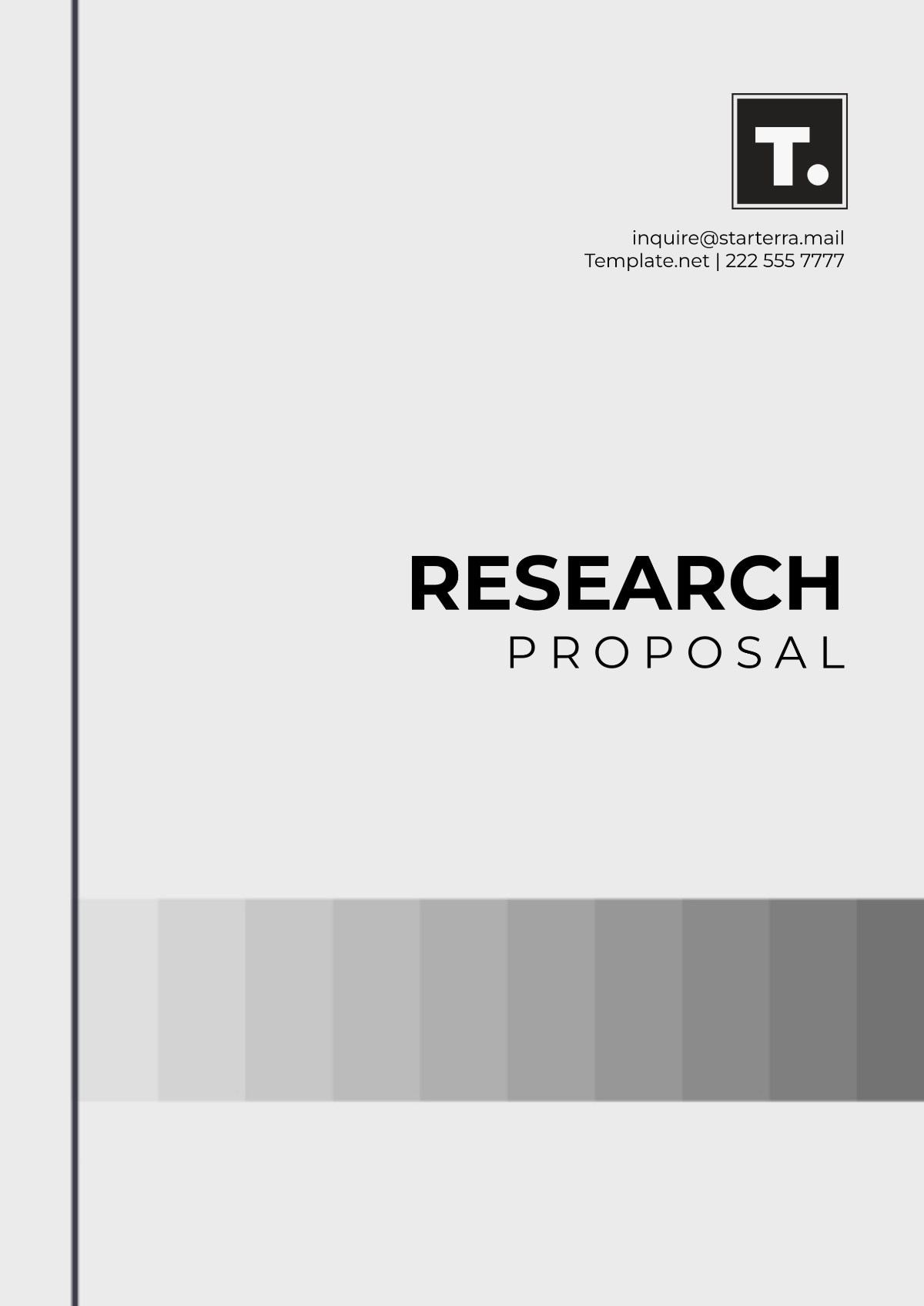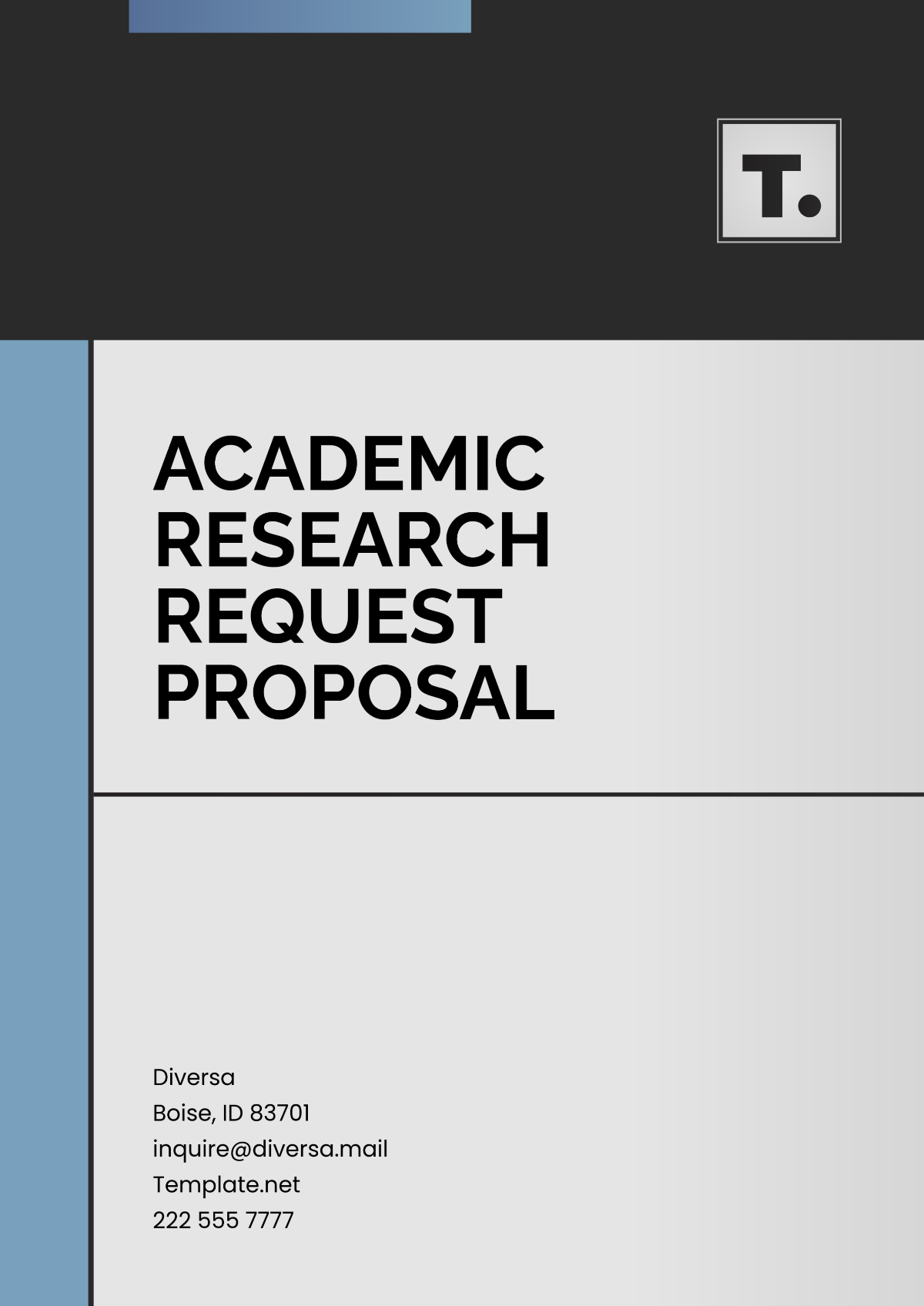Academic Format Proposal for Research
Prepared by: [Your Name]
Date: [Date]
I. Title
The title should clearly and concisely describe the focus of your research. It should be specific, informative, and free of jargon, allowing the reader to easily understand the main focus of the study. Ensure that it reflects the research's scope, including key variables or concepts. Keep the title as short as possible while maintaining clarity.
II. Abstract
The abstract should provide a succinct summary of your entire research proposal. It needs to include a brief overview of the research topic, the problem statement, the main objectives, the research methodology, and the expected outcomes. It should be concise, typically between 150 and 250 words. The goal is to allow the reader to quickly understand the focus and significance of your research. Write it last, even though it appears first in the proposal, as it should reflect the content of the final proposal.
III. Introduction
The introduction section of the proposal should provide the background and context for your research. Begin by introducing the broad topic of your study, then narrow it down to the specific problem or issue your research intends to address. Explain why the topic is important and what motivates your research. Provide any necessary definitions and set the stage for the research questions that will follow. You should also discuss the relevance of the research and how it aligns with existing literature or addresses a gap in current knowledge. End the introduction by stating the aims and objectives of the study.
A. Problem Statement
The problem statement should clearly articulate the issue that your research is addressing. This is the "why" of your study: why is this research necessary, and what is the problem that needs solving? Define the problem within the context of the field of study and describe its significance. Explain any real-world implications and the potential for your research to make a meaningful contribution to the field.
B. Research Objectives
In this section, you should specify the aims or goals of your research. State the key objectives that your research will accomplish, ensuring that each objective directly addresses the problem statement. The objectives should be clear, measurable, and achievable within the scope of the research. They act as the roadmap for your study and guide the research design. Be concise, but make sure the objectives cover all aspects of your proposed research.
IV. Literature Review
The literature review provides a synthesis of existing research related to your topic. It demonstrates your knowledge of the field and shows how your research fits into the larger academic conversation. Identify and summarize key studies that are directly related to your research, noting any agreements, contradictions, and gaps. Highlight the methodologies used in previous research and discuss their relevance to your approach. The review should establish the theoretical framework that will guide your study and help justify your research approach. Ensure you critically analyze the literature rather than just summarizing existing works.
V. Research Questions/Hypothesis
The research questions or hypotheses section outlines the specific inquiries that your study aims to answer. Clearly define the questions or hypotheses that are central to your research. These should be directly linked to the problem statement and research objectives. If you are formulating hypotheses, they should be testable predictions based on the literature and your research framework. The research questions should be specific, concise, and aligned with the methodology and methods chosen for your study.
VI. Methodology
The methodology section outlines the research design and the methods you will use to collect and analyze data. This is one of the most important sections, as it explains how you will carry out your research and answer the research questions. Be clear about the type of research you will conduct (e.g., qualitative, quantitative, mixed-methods) and justify why this approach is appropriate for your study. Describe the data collection methods you will use (e.g., surveys, interviews, experiments, observations), and explain how you will analyze the data (e.g., statistical analysis, thematic coding). Also, specify any tools or instruments you will use to collect data and discuss any ethical considerations related to your research. Ensure that your methodology is detailed enough that another researcher could replicate your study.
A. Research Design
The research design defines the overall framework for your study. It explains the structure of the study and the logical steps you will follow to gather and analyze data. You need to specify whether your research will be exploratory, explanatory, or descriptive and justify the choice. Provide a clear rationale for why this design is most appropriate to address your research questions.
B. Data Collection
In this subsection, you will describe the techniques and tools you will use to gather data. This could include surveys, interviews, focus groups, case studies, or any other relevant method. Detail how you will recruit participants, how many you intend to involve, and any inclusion/exclusion criteria. Be specific about the instruments you will use (e.g., questionnaires, interview guides) and how you will ensure data accuracy and reliability. Mention any pilot testing or pretesting you plan to do before full-scale data collection begins.
C. Data Analysis
Explain how you will process and interpret the data you collect. This section should describe the techniques and tools you will use to analyze the data, whether qualitative or quantitative. For quantitative data, outline the statistical methods you will apply (e.g., regression analysis, ANOVA). For qualitative data, describe how you will analyze text-based data (e.g., thematic coding, content analysis). Discuss any software or tools you will use for data analysis, and mention how you will ensure the validity and reliability of your analysis.
VII. Timeline
In this section, you will outline a clear and realistic timeline for your research project. Break down the major tasks or phases of your research and provide estimated time frames for completing each. Include milestones such as literature review, data collection, data analysis, and writing the final report. The timeline should be feasible within the scope of the project and your available resources. If relevant, include any dependencies between tasks and allow time for revisions or unforeseen delays.
VIII. Budget (if applicable)
If your research requires funding or resources, the budget section should provide a breakdown of all anticipated costs. List each item or resource needed for the project (e.g., software, materials, participant incentives) and estimate the costs for each. Include any equipment or tools that will be necessary for data collection or analysis. Be realistic and ensure the total budget aligns with your funding sources or available resources. This section is crucial for securing grants or funding and demonstrates your ability to manage the financial aspects of the research.
IX. References
The references section should list all the academic works, articles, books, and other sources cited throughout your proposal. Use a consistent citation style, such as APA, MLA, or Chicago, depending on your field of study. Ensure that all references are relevant to your research topic and properly formatted. The references should demonstrate the depth of your literature review and provide credible support for your proposed study.

















































